- Learning time
- 40 minutes
- First play time
- 120 minutes
Apiary
Designed by: Connie Vogelmann
Apiary proposes an alternate or far-future reality where bees are colonising the galaxy. Despite lacking opposable thumbs, these space-faring Anthophila have developed numerous sciences and technologies and are now seeking to establish themselves as the best bee colony around. Doing so uses the worker-placement mechanic beloved of many games of the last 20 years. However Apiary’s workers aren’t simply mindless drones, but aspirational officers, seeking seniority!
Each player starts with a hive mat and three bees. On your turn, you can either send a bee off to the main board to carry out an action for you, or you can retrieve all placed-bees to your mat. Let’s look at the actions first.
Without going into super-detail about it, the Explore action allows you to grab the basic resources of fibre, pollen and water. You might also take the Convert action to change these resources into wax or honey. Resources are spent by taking the Advance or Carve actions to purchase hexagonal tiles to add to your hive. Loosely speaking, the green tiles provide space to store resources as well as income (see retrieve, below), the blue tiles are in-game advantages or benefits, and the red tiles supply one-off boosts (resources, for instance!) and/or some end-game points.
The Research action gets you cards, which can be used in three ways: discard for any basic resource, discard to use the one-off action at the top of the card, or plant beneath your hive board for end-game scoring. And the Grow action gets you more bees, and expansions to your hive if you want them. You might need to expand if you’re running out of room, and you’ll most likely need more bees at some point, because you’re going to run out of them.
The bees are four-sided and sides are numbered 1-4. They start off as level ones, but whenever your bee is pushed off an action spot by another bee – even your own – it can level up and fly back to the hive, becoming available to use again, first as a 2, then a 3, and finally a 4 once it’s been bumped three times. Level 4 bees are great because they get an additional benefit at each action spot (we won’t explain them all here) making them very powerful. But they obviously can’t level up, so when a level 4 bee is bumped off the board it goes into hibernation. The bee itself is placed off to one side, ready to be Grown again, and you place a hibernation token in the hibernation comb on the board. These serve both as an avenue to more points – potentially, if you have more hibernating bees than your competitors – but also a game clock: the moment the comb is full, everyone gets one more turn and then the game ends. Points are scored in multiple ways – the tiles in your hive, cards, the asymmetric starting tiles and so on – and ultimately the player with the most points is crowed Queen Bee.
The guru's verdict
-
Take That!
Take That!
Nothing to speak of. Bees never block the actions, so the only interaction is very indirect: the claiming of tiles and the hibernation spaces, where having the most bees will bring bonus points.
-
Fidget Factor!
Fidget Factor!
Fairly low once all players are familiar with the game. The core rhythm of it is harvesting resources and buying tiles with them, but Apiary has enough wrinkles around that - not least the levelling up of workers - to keep things interesting and add some nuance without feeling horribly complex.
-
Brain Burn!
Brain Burn!
Largely a tactical singeing than a strategic blaze. What bees do you have? Where are they most productive right now? When should you retrieve? The busy board suggests an overwhelmingly complex experience, but we've found it takes about 80 minutes with three of us.
-
Again Again!
Again Again!
There's a lot of in-built variety from the asymmetric hives to the tiles and cards, and not least the player decisions about what and when on the board.

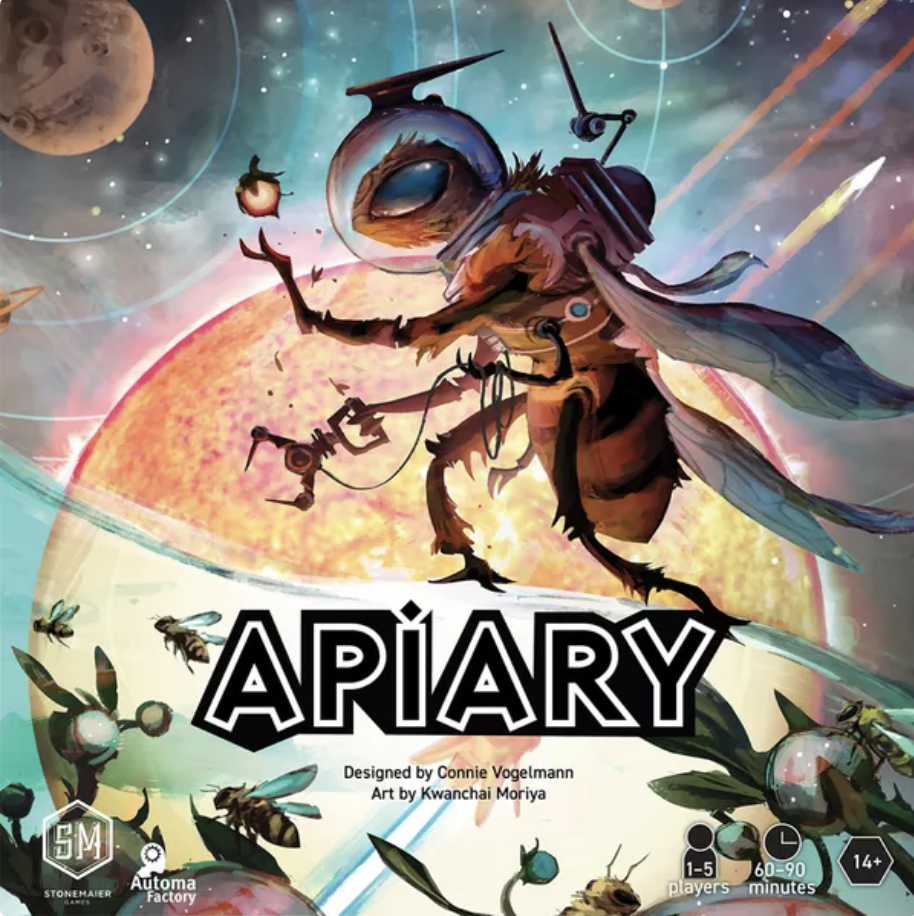
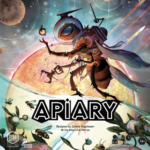
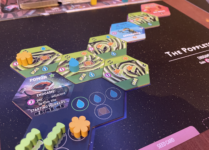
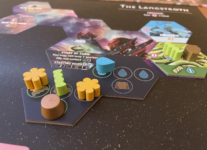
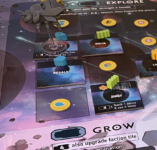
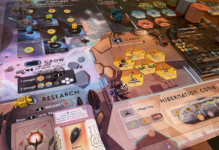
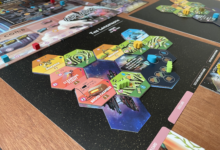
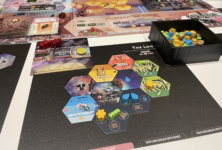


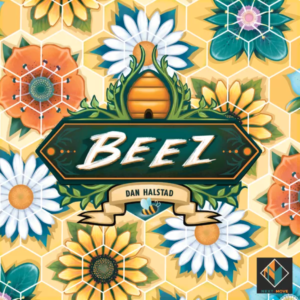




Sam says
I enjoy Apiary. There's precious little interaction, no laughs and the dramatic moments are few, so it's not ticking my go-to boxes. But Apiary does other things well: as a puzzle, it tantalises by tempting you in numerous directions simultaneously. As an experience, it's reasonably fast-moving, with most turns brief and simple. And despite the somewhat bonkers theme, it's attentively presented. There is something undeniably satisfying about building your 'hive' - even when the game feels mechanical rather than thematic, it's still engaging enough to overcome the lack of interaction and abstracted-vibes. Bees in space! Why not.